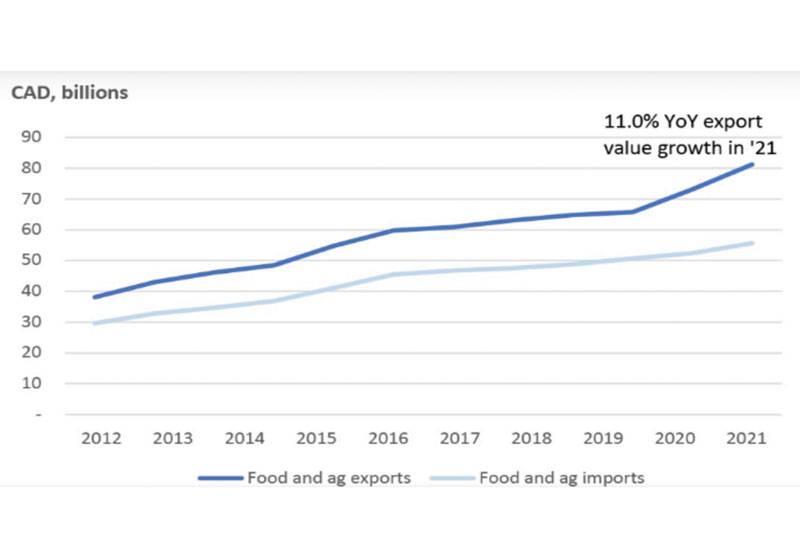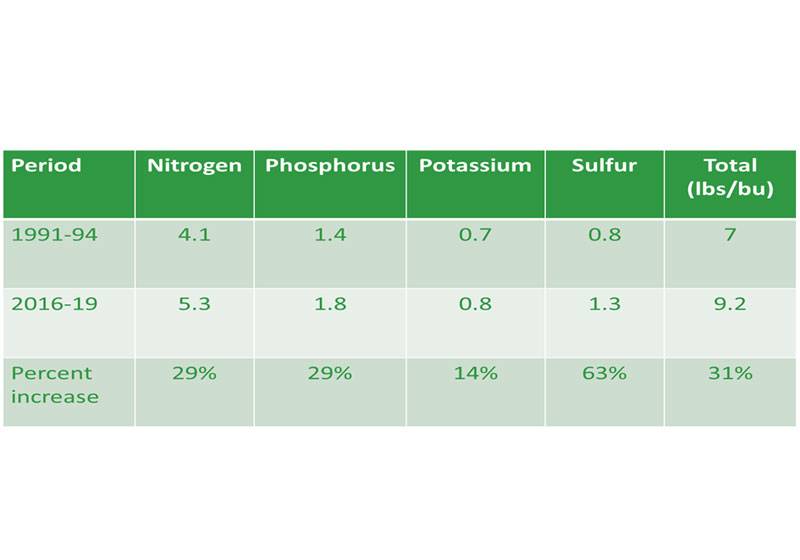
By Dr. Stuart Smyth, Department of Agricultural and Resource Economics, University of Saskatchewan
At the 2023 CAAR Conference held in Edmonton on February 6-8, 2023, Dr. Stuart Smyth of the Department of Agricultural and Resource Economics at the University of Saskatchewan presented his speech on reconciling the Barton Report with recently proposed policy changes.
The Barton Report is the moniker given to a set of recommendations from the Canadian federal government’s Advisory Council on Economic Growth, set up years ago to devise “bold ideas that will significantly improve Canada’s economic growth trajectory.” Its initial chair was Dominic Barton—hence the name of the report.
The following, prepared by Dr. Smyth for the CAAR Communicator magazine, is based on his speech at the Conference.
Barton Report Recommendations
In 2016, the federal government struck the Advisory Council on Economic Growth with the mandate of finding ways to accelerate Canadian economic growth and improving prosperity for Canadians.
When the Council submitted its report in 2017, it identified six economic sectors capable of sustained, long-term economic growth, with agriculture and agri-food identified as one of the means.
Additionally, the Council clearly stated that Canada needs to modernize its “regulatory and tax regimes so they promote more investment and innovation, enabling enterprises to pursue growth opportunities…”
In identifying agriculture and agri-food as one of the key sectors capable of contributing to long-term economic growth, the Council suggested that an export target value of $75 billion by 2025 was possible.
At the time of the report’s release, the most recent data was from 2015, showing that Canadian agriculture and agri-food exports were valued at $55 billion.
The recommendation that a $20 billion increase in agricultural exports from $55 billion to $75 billion was seen as aggressive by many in the agriculture sector. This export value increased even further when in 2018, the Agri-Food Economic Strategy Table raised the target to $85 billion by 2025.
Current State of Agriculture Exports
Canada has long been a leading agricultural commodity exporting nation.
Agriculture and food production are significant components of the Canadian economy, with primary production accounting for $32 billion in GDP, with processing and retail accounting for a further $66 billion. When the entire agriculture and agri-food sectors are combined value, it results in a matter of $135 billion, representing seven percent of Canada’s GDP value.
Based on 2021 export data, Canada was the fifth-largest exporting nation, with an export value of $82 billion. These exports resulted in farm cash receipts for 2021 equaling $77 billion—a record high. Leading exports were cereals, oilseed, beef, and dairy products.
Given the $82 billion in agricultural and agri-food product export value, Canada achieved the target set by the Advisory Council on Economic Growth, just four years earlier.
Some of this increased value will be due to the higher rate of inflation that has impacted the Canadian economy since the advent of the Covid-19 pandemic in the spring of 2020. It should additionally be expected that Canada has likely already achieved the Agri-Food Economic Strategy Table target of $85 billion, as both inflation and commodity prices remained high during all of 2022.
With commodity prices remaining high at the start of 2023 and the Ukraine war showing no signs of ending—and even if it does, there will be considerations of penalties to aggressor countries and other long-term issues for all countries affected to consider—it is conceivable that an export target of $100 billion could be reached by 2025.

Figure 1 (above) highlights the continuous rise in the value of agriculture and agri-food exports year over year (YoY) for the past decade. Over this period, the value of Canadian agricultural exports has more than doubled, rising from $40 billion in 2012 to over $80 billion in 2021.
While agriculture and agri-food exports have surpassed the $75 billion export target set by the Advisory Council on Economic Growth, the more an important part of the report on the regulatory regime modernization requires attention and further efforts.
In some respects, improved regulatory efficiency has been achieved in recent years. However, serious barriers exist and are being proposed that will drastically reduce the potential for commodity production and export values to continue to rise.
Regulatory Barriers to Further Growth
Over the past decade, there has been a significant increase in policies relating to climate change mitigation, greenhouse gas (GHG) emission reductions, and improved sustainability.
Agriculture has been increasingly impacted by policies developed by environmental ministries, many of which seek to increase existing barriers and impose new barriers.
Examples of this are readily evident in the European Union, where policy is guided by the inclusion of the Precautionary Principle, rather than being empirically-based. The Precautionary Principle has been adopted by EU policymakers, allowing them to reject safe technologies if the risk potential exists.
The EU has moved to an emotion-based policy and the perception that zero risk is costless and readily achievable.
The reality is that risk can never be zero. And, the closer risk mitigation gets to zero, the cost to do so rises dramatically.
In 2020, the EU released its Farm to Fork Strategy for more sustainable and environmentally friendly agriculture production.
This strategy calls for reduced use and toxicity, of pesticides by 50 percent, a 20 percent reduction in the use of fertilizers, facilitating the sale of antimicrobials used for farmed animals by 50 percent and increasing organic farming to reach 25 percent of agricultural land from the current level of eight percent.
Not a single one of these strategies is based on any supporting empirical evidence, but the numbers emotionally appeal to European citizens.
Canadian regulation and policy development firmly adhere to science-based everything, and as such a lengthy history of ensuring that policy development is solidly grounded in evidence as the starting point for discussions.
However, this changed in 2020, when the Environment and Climate Change Canada (ECCC) announced a 30 percent emissions reduction by 2030 from fertilizer use.

In a similar fashion to the EU’s F2F strategy, the ECCC provided no reference for this mandate, indicating that it has no scientific rationale.
Initial indications from ECCC were that this was a mandatory emissions reduction; however, in the Fall of 2022, Canada’s Agriculture and Agri-Food minister acknowledged that this was, in fact, a voluntary emissions target.
The concern with the ECCC’s 30 percent emission reduction target is that the federal government has no reliable baseline data or assessment metrics, capable of determining the agriculture industry’s progress towards achieving this.
Research undertaken by my research team indicates that the opposite is happening and that, rather than trying to reduce fertilizer use, Canadian farmers should be efficiently using more fertilizer to ensure increased yields, which will also enable Canada to continue increasing its agriculture exports—it’s also part of maintaining food sustainability and feeding the hungry.
Our research surveyed Saskatchewan farmers about their fertilizer use over their full crop rotation between 1991 and 1994 to establish the baseline for fertilizer use before to the rapid adoption of technologies that contributed to increased use efficiency.
The research also required farmers to provide their fertilizer use for the same field during their 2016 – 2019 full crop rotation.
Our evidence indicates that even with the adoption of variable rate application equipment, increased soil testing, 4R strategy, and field mapping, the use of nitrogen has risen by 29 percent.
Crop yields have correspondingly increased by 28 percent, confirming that greater fertilizer use contributes to higher results. That’s a science-based fact.
Our research confirms that even with the various technologies that contribute to increased fertilizer use efficiency, its use has continually increased.
Based on our evidence, there is no economical way that a 30 percent emissions reduction target is in any way achievable, or even advisable. The 30 percent emission reduction is only achieved through using 30 percent less fertilizer—which in turn means a reduced crop yield.
Reconciling Increased Exports with Environment Policy
The Advisory Council on Economic Growth correctly identified that agriculture and agri-food have the potential to contribute to economic growth and the prosperity of Canadians, as exports have risen by nearly $30 billion since 2015.
However, recent environmental policy change proposals deliberately contradict the Council’s recommendation of regulatory modernization.
For agriculture and agri-food production to continue to contribute to growing the Canadian economy, efficient, science-based regulations are required—not risk-averse, precautionary-based principles.
Canada is well-positioned to make substantial increases in the value of agricultural exports and can capably achieve this with the continued reduction in regulatory barriers.
